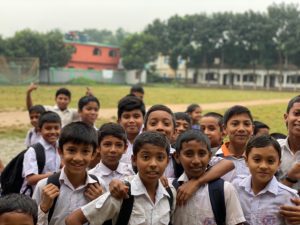Pure Earth reached several milestones in 2021, including critical recognition as the most effective organization working today to solve the global childhood lead poisoning crisis!
We are especially proud of this as it reflects the hard work put in by the global Pure Earth team and our partners.
What else did we accomplish in 2021?
Pure Earth teams began to return to the field, whenever it was safe to do so, taking precautions, and working in close consultation with local partners and communities. We conducted in-person remediations and reforestation work, toxic site investigations, and training sessions, but we also learned to be flexible. When COVID occasionally halted fieldwork, our teams would go into planning mode instead.
During time away from the field, our experts developed innovative new tools to measure and calculate pollution’s impact; published new research; organized webinars to share health and pollution data, and reached millions through a global lead awareness campaign.
Learn more about these projects and other 2021 highlights.
Global Lead Program Milestones
Critical Praise For Pure Earth’s Leadership and Effectiveness in Lead Prevention
In 2021, our Global Lead Program received critical praise, confirming the effectiveness of our approach and programs, leading to a new influx of funding support from donors.
Think tank Rethink Priorities, in their Global Lead Exposure report, acknowledged Pure Earth as the “largest organization working on lead exposure,” and recommended Pure Earth as a leading organization with effective solutions. One of the country’s leading results-oriented philanthropy, GiveWell, agreed.
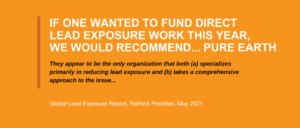

PECP Reaches One-Year Milestone
Launched in 2021 by Pure Earth, Clarios Foundation, and UNICEF, the global PECP (Protecting Every Child’s Potential) partnership to protect children from lead exposure has made a big impact in just one year.
What started with $15M in seed grants to support work in five countries – Bangladesh, Georgia, Ghana, Indonesia, and Mexico– has grown with $8.2M in new funding and expansion into two additional countries– India and the Philippines. PECP also welcomed new partners, including GiveWell, the Global Alliance on Health and Pollution, and Vital Strategies.
PECP’s rapid growth is a sign that our call to action in 2020, made following the release of the Toxic Truth report, is being heard.
Generating Global Momentum for Lead Awareness
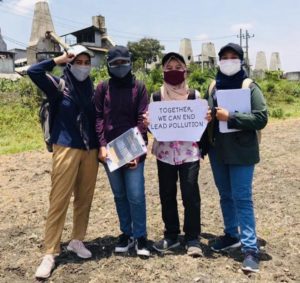
In October, we mobilized Pure Earth teams around the world for a global campaign that reached millions during International Lead Poisoning and Prevention Week. The campaign featured webinars, panel discussions, school and hospital talks, children’s essay competitions, Op-Eds, a social media campaign that garnered over 21 million impressions, and more.
Together, our efforts helped to increase awareness about lead exposure with families, government officials, local NGOs, the general public and other stakeholders in Bangladesh, Ghana, Indonesia, Mexico and the Philippines, where our teams are already working to reduce lead exposure. Learn more.
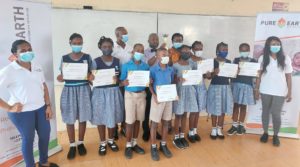
Launch of First National Lead Monitoring Program in the Philippines
In 2021, we helped the Philippines launch the first-ever national survey of childhood lead poisoning in the country by persuading the government to include blood lead testing into its national health survey.
The Philippines is not the first country to launch a national childhood lead monitoring program this way. Pure Earth had earlier spearheaded the effort successfully in Mexico and the Republic of Georgia. This innovative model, which can be replicated quickly, even in countries with few resources, has the potential to make a big impact on the global childhood lead poisoning crisis. Learn more.
Keeping Pollution Out Of Kitchens And Homes
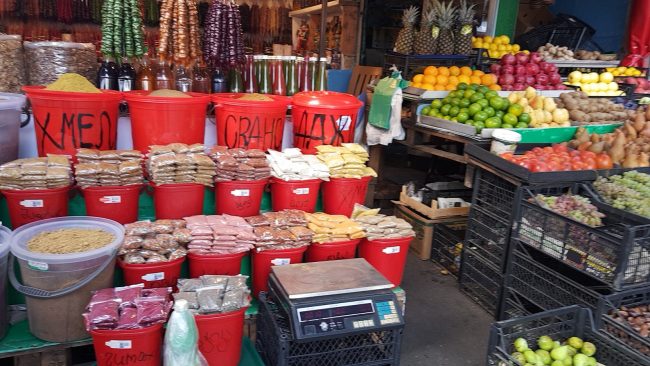
Conducting Rapid Marketplace Screenings in 25 Countries
What are the common sources of lead exposure that end up in kitchens worldwide? In 2021, we launched an ambitious project, supported by a grant from GiveWell, to conduct rapid marketplace screenings in 25 countries to find out.
Using a protocol that allows for quick collection of data, Pure Earth is deploying global teams to investigate markets worldwide. They will sample items ranging from spices to medicines, cosmetics, toys, ceramics, aluminum cookware, paints, sweets and other items.
Stemming The Flow of Contaminated Spices in the Republic Of Georgia
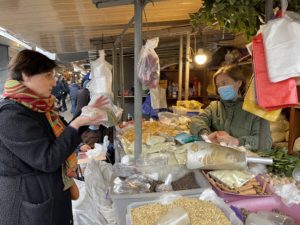
When a 2019 government report revealed that 41% of children in the Republic of Georgia have high levels of lead in their blood, Pure Earth investigated and traced the source of lead to spices. By 2021, in just two years, Pure Earth experts were able to help the government stem the contamination. According to the Georgian Food Safety Agency, lead-contaminated spices are no longer found in any market in the country.
The Pure Earth team in Georgia did this by surveying 77 spice business operators covering almost all major markets in Georgia, testing 264 products. The team monitored local markets, interviewed spice distributors, evaluated packaging materials, investigated wholesale warehouses, and more, and eventually tracked the lead chromate to pigments added to spices for color. Using this information, the Georgian government was able to take preventative action through new regulations that targeted the problem. Learn more.
Advising U.S. Regulators on Toxic Baby Food, Pushing For Action To Protect Global Food Supply

In 2021, two reports from the U.S. House on the widespread contamination of baby food, and a new Consumer Reports study on contaminated spices, led to heightened public awareness in the U.S. about how pollution crosses borders and affects our global food supply chain, sneaking into kitchens everywhere.
In March 2021, Pure Earth experts and other colleagues in the field met with U.S. legislators to brief them on toxic heavy metals contaminating foods, and discuss solutions to protect families.
While toxic baby food was the key issue at hand in that meeting, Pure Earth CEO Richard Fuller reminded the lawmakers present that the problem of toxic heavy metal contamination was much broader, affecting spices, supplements, and a range of imported foods and products found on store shelves across the country.
Unfortunately, the bill to address toxic baby food is currently stalled. Pure Earth will keep an eye on developments and remain in contact with legislators to provide further guidance. In the meantime, our work continues worldwide to clean up pollution at its source before it enters the global food supply chain. Learn more.
Keeping Lead Off The Table in Mexico
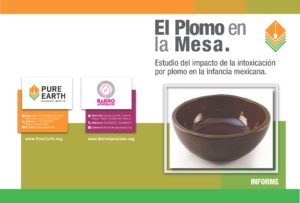
A new report focusing on the impact of lead poisoning on Mexico’s children was published by Pure Earth in 2021, confirming that lead oxide glaze (traditionally used to glaze pottery) is the main cause of chronic poisoning at the national level. With traditional pottery used in many homes and restaurants across the country, many children in Mexico are exposed to lead with every meal.
This report follows findings of a 2018 National Health and Nutrition survey from the government that revealed 1.4 million Mexican children aged 1 to 4 years have elevated blood lead levels above the CDC level of concern. Learn more.
Safeguarding Traditions From Toxic Lead, One Neighborhood At A Time
With our report confirming that toxic lead is on most kitchen and dining tables across Mexico, Pure Earth Mexico launched Barrio con Barro, a campaign designed to transform neighborhoods into lead-free communities, starting in La Roma, the city made famous in the Oscar-winning movie of the same name.
The September 2021 event, which brought together chefs, community leaders and others, celebrated the deep connection between Mexico’s food and pottery tradition, and emphasized the importance of safeguarding these rich traditions from toxic lead. Learn more.
Lead-Free Alliance Comes Together in Mexico
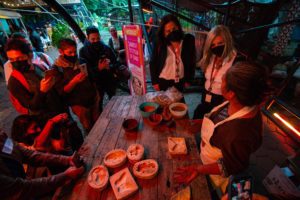
Around the same time, Pure Earth Mexico also launched a lead-free alliance (Alimentos / Niños sin Plomo) to unite the business sector and the government to achieve a common purpose: to eliminate lead from pottery and reduce lead poisoning of Mexican boys and girls. Activist and poet Homero Aridjis made an appearance to issue an emphatic call to action.
These efforts were covered extensively by media across Mexico, reaching an audience of millions, from restaurant owners to everyday consumers, who are learning about the issue and how to protect themselves. Learn more
Engaging Women to Safeguard Maternal and Child Health, a Strategic Focus
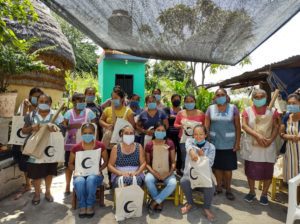
In 2021, we expanded our focus on women-led solutions. Pure Earth’s experts report that once women in a community are educated on the dangers and sources of toxins, they often take charge—participating in trainings on how to clean up pollutants in the home and make their work practices safe. With lead and mercury increasingly making their way into kitchens around the globe in baby food, tuna, spices and cookware, women’s participation will be key.
In Mexico, we developed Circulo de Mujeres or Circle of Women, a series of workshops exclusively designed for women potters. Preliminary data is extremely promising, with 100% of the participants committing to adopting lead-free practices. Learn more.
Pure Earth also held its inaugural Forces of Nature event on International Women’s Day on March 8, 2021. Charlotte Triefus, Pure Earth Board Member; Larah Ortega Ibanez, Pure Earth Philippines Country Director; and Mary Collene Daet, HSBC Volunteer, were recognized for their contributions to implementing and advocating for pollution solutions.
Fieldwork
Removing Lead From Mizrapur, Bangladesh
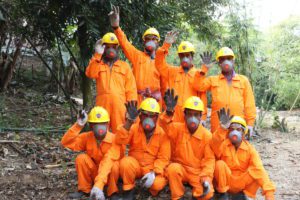
The average blood lead level of children in Bangladesh is among the highest in the world. In 2021, we began remediation of a 4.5 hectare lead-contaminated site in a community in Mirzapur, Bangladesh, where over 600 people live, and an additional 450 people come to work or visit.
The contaminated area was home to an informal lead-acid battery recycling operation, which operated for three and a half years before it was abandoned in 2019. The uncontrolled smelting of lead-acid battery components in open pits left behind residual battery wastes and highly contaminated soil, not only in the two processing areas but also in the surrounding neighborhood. The cleanup work included amending the contaminated soil with phosphate to reduce the bioavailability of the lead, encapsulating the phosphate-amended soil in the ground, and the removal of lead dust from nearby homes. The project will also include blood lead level testing of children and ongoing education.
Demonstrating A Model For Lead Cleanup Across India
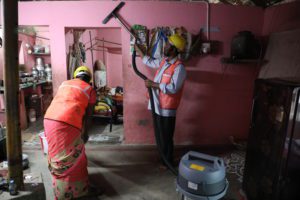
In the fall of 2021, after over a year of delay because of COVID restrictions, remediation began at a community contaminated by a lead smelter in Tamil Nadu, a state documented as having the most deaths caused by lead exposure in India, according to the Institute of Health Metrics and Evaluation (IHME).
Like many small operations across India, this lead smelter is located near a community. For years it operated in close proximity to 54 homes and a childcare center and school with 50 children below the age of five. Pure Earth investigators found that unsafe practices were exposing workers and the community to soil lead levels as much as 12 times higher than the US EPA standard.
Following Pure Earth’s recommendations, the smelter owner decided to be part of the solution. He shut down the smelter and is working to repurpose the factory. As part of the cleanup, Pure Earth teams are collecting blood lead samples of children before and after the remediation in order to confirm the impact of the lead reduction efforts.
The project, in part supported by the Trafigura Foundation, will serve as a model to demonstrate how communities contaminated with lead can be cleaned up across the state and the country.
Our Movement To Clean Up The World’s Most Toxic Sites
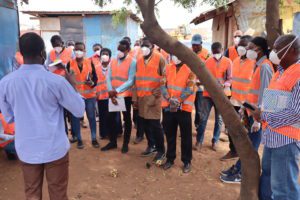
In 2021, we continued expanding our network of pollution investigators around the world, training new investigators in Ghana, Indonesia and other countries as part of our Toxic Sites Identification Program (TSIP). To date, we have trained more than 500 investigators who have identified over 5,000 toxic sites across six continents in 50 countries. One journalist describes TSIP as a “movement to clean up the world’s most toxic sites.”
Expanding Rainforest Reforestation
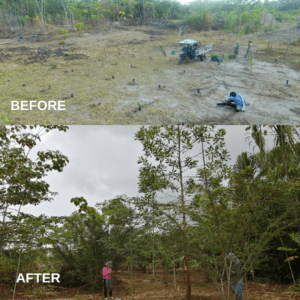
In 2021, we conducted follow-up evaluation and restoration work at two sites we helped to reforest over the previous three years, working with artisanal miners from the AMATAF mining association. Support for our reforestation work comes in part from partners in the jewelry industry like Tiffany and Co. and Brilliant Earth.
Pure Earth teams found the survival rate of seedlings at both sites was about 87%, which is excellent. We also delivered 5 tons of the soil amendment biochar, donated by project partner CINCIA, to the sites for fertilization. In addition, nine artisanal miners were trained in monitoring and evaluation methodology. Watch: Helping artisanal miners “fulfill an obligation to the rainforest.”
Addressing Mercury
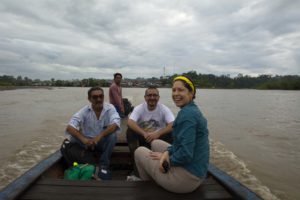
Activating The Jewelry Industry, Demonstrating A Mine to Market Solution
In 2021, we continued our engagement with the jewelry industry by working with them to demonstrate a potential mine to market solution for mercury-free gold.
We connected Peruvian jeweler Andrea Jose Castro with Don Pedro, an artisanal gold miner Pure Earth trained to go mercury free in the Peruvian rainforest. As a result, Andrea made the first purchase of mercury-free gold from the Peruvian Amazon for the international market. She then brought this piece of mercury-free gold to New York-based designer Dana Bronfman. The piece of jewelry designed by Bronfman represents our first attempt to help responsible gold miners get their mercury-free gold to market with 100% traceability. Learn more: Watch our mine to market solution video, and follow Andrea into the Amazon.
Addressing Colombia’s Mercury Problem
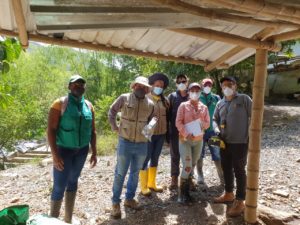
Colombia suffers among the worst mercury pollution in the world, releasing between 50 to 100 tons into the environment every year, according to estimates made by the Colombian government. Commissioned by a UN initiative and supported by the Colombian government, Pure Earth began a project in 2021 to investigate mercury-contaminated sites spanning 14 municipalities and four departments across the country, with the aim of removing 20 tonnes of mercury from the environment. Learn more.
Groundbreaking New Tools and Platforms
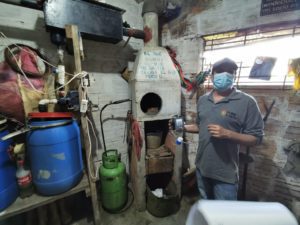
Mercury Contamination Index (MCI)
With funding from UNEP and GEF Gold, Pure Earth experts revised the existing Blacksmith Index (a toxic site ranking formula developed by Pure Earth over a decade ago that is used extensively today) to specifically focus on evaluating the risk of mercury exposure from sites contaminated by artisanal and small-scale gold mining (ASGM).
With ASGM currently the largest source of mercury pollution in the world (UNEP reports that 38% of global mercury emissions originate from ASGM), the new MCI could serve as a tool for governments to prioritize and remediate mercury sites across the world.
Pure Earth experts are currently using the MIC in Colombia. Learn more.
ChemObs Calculator
In 2021, Pure Earth completed the development of an Economic Cost of Inaction Calculator that calculates attributable Disability Adjusted Life Years (DALYs), full scale intellectual quotient (IQ) decrement, and economic costs resulting from chemical exposure across Africa. The calculator is part of the Chemical Observatory Project, or ChemObs, a partnership between UNEP, WHO and the Africa Institute, that Pure Earth was invited to join.
Among the top ten countries with the highest rates of death attributed to pollution, six of them are in Africa. ChemObs will provide participating African countries with the ability to establish evidence-based policies and make sustainable decisions on sound management of chemicals. Learn more.
Addressing Lead Exposure Across Africa
With financial support from UNEP, Pure Earth developed a set of recommendations for the government in Burkina Faso and Tanzania on the environmentally sound management of used lead-acid battery (ULAB) waste. Pure Earth created working groups in both countries to discuss tools and policy development to advance discussion on the management of ULABs. As part of the same project, Pure Earth is working with a technical expert to develop a guidance manual on improving the management of ULABs in Africa.
Giving Poisoned Communities a Voice
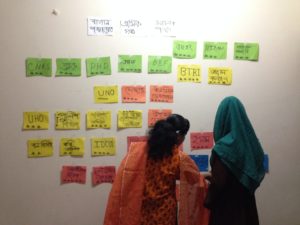
We continued expanding our global community outreach project in 2021, this time in Bangladesh. The program, which has already launched in Colombia and Senegal, aims to give communities that have been exposed to poisonous toxins a platform to amplify their voices and provide opportunities to address pollution threats in their communities.
In the Moulvibazar district, home to the most tea plantations in Bangladesh, our outreach workshops brought tea workers together with journalists, teachers, community health workers, and NGO staff to discuss pesticide exposure in plantations. In addition to being exposed to hazardous conditions, tea workers, 75% of whom are women from ethnic minorities such as Santal, Morong, and Unrao, are poorly paid. “Our community lacks education and awareness. We want more events like this,” said Mintu Deshwara, a journalist who attended one of the workshops. Learn more
In the district of Naogaon, where over 1200 rice and husking mills are located, rice husk pollution was identified as a major problem. The outreach workshops brought together residents, rice mill owners, rice mill laborers, local environmental activists, government officials, leaders of local indigenous communities, journalists, school teachers, school and college students, public health experts, and other community leaders to find solutions together. Learn more.
—–
Learn more :
Pure Earth’s 2020/2021 Annual Report.




